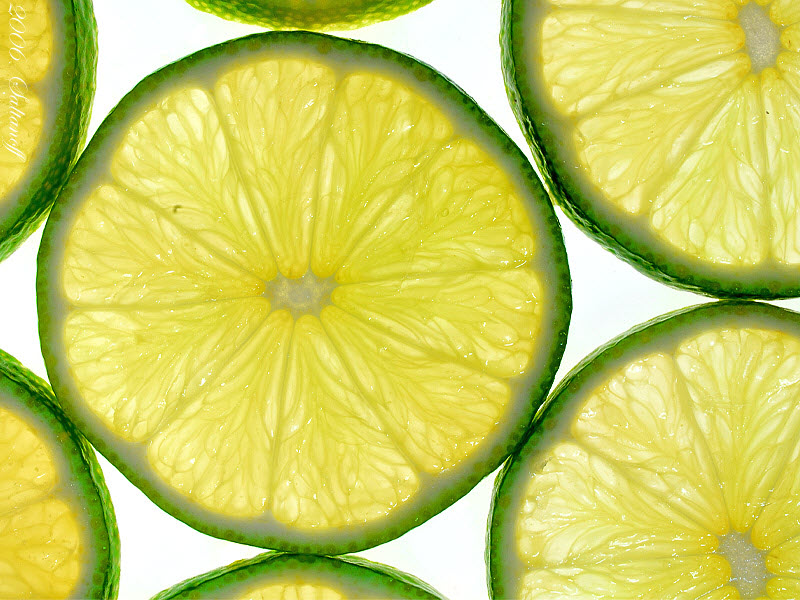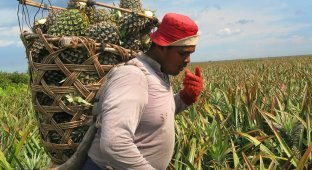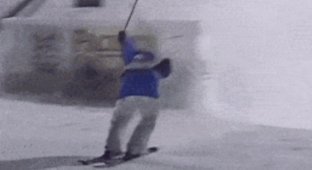The scientific name of the genus is taken from the Latin language, in which the word citrus meant “lemon tree.”

Citrus fruits are not limited to orange, lemon and vitamin C. There are from 15 to 30 types.

The culinary uses of citrus fruits are very diverse: juice, zest, pulp - everything goes into use. Aromatic oil is obtained from the peel of the fruit; a variety of dishes are seasoned with the zest and juice, and the pulp of some citrus fruits is eaten as an independent dessert.

The most common orange

The orange tree, originally from China, was brought to Europe by the Portuguese and now grows well along the entire Mediterranean coast, as well as in Central America.


Oranges are a wonderful dessert; they improve appetite and are useful as a general tonic. Due to the presence of a complex of vitamins and other biologically active substances in them, these citrus fruits are recommended for the prevention and treatment of hypovitaminosis, diseases of the liver, heart and blood vessels, and metabolism. Pectins, which are contained in oranges, promote the digestion process, enhance the motor function of the large intestine and reduce putrefactive processes in it.


The peel, in addition to the well-known economic use for zest, infusions, jam, etc., is also used for the preparation of various kinds of liqueurs in Bologna and Florence. Orange oil is also obtained from the peel.

Lemon

Lemon is a very sour citrus fruit. Homeland - India, China and the tropical Pacific islands. Unknown in the wild. Widely cultivated in many countries with subtropical climates.

Lemons are eaten fresh, and are also used in the manufacture of confectionery and soft drinks, in the alcoholic beverage and perfume industries. Lemon is used as a spice in various fruit salads, sweet dishes, cookies, sauces, fish, poultry and rice dishes.


For therapeutic and prophylactic purposes, lemons are used for hypovitaminosis, avitaminosis, diseases of the gastrointestinal tract, mineral metabolism disorders, rheumatism, urolithiasis, atherosclerosis, scurvy, sore throat, gout, hypertension. In the Middle Ages, it was believed that lemon protected against the plague and was an antidote for snake bites. Eastern medicine considered lemon an excellent remedy for treating wounds and pulmonary diseases and an antidote for various poisonings.

Currently, lemon juice and lemon oil obtained from fresh peels are used to improve the taste and smell of medicines.
Lemon is widely used as a cosmetic product - lemon water softens and whitens the skin; it is used in a mixture with beaten egg white, glycerin and cologne to get rid of freckles, age spots, and rejuvenate the skin. Lemon juice heals cracks in the skin and reduces brittleness of nails. Lemon peel boiled in honey was used to improve digestion. For cosmetic purposes, lemon is used as hair balms, creams, lotions, and for making lotions and masks to care for various skin types.

Lime

Green fruits are similar to lemons, but they are more sour and have a special unique aroma. Originally from India.

The antirheumatic, antiseptic, antiviral, bactericidal, healing, restorative, and tonic effects of lime are widely used in medicine. Calms strong and frequent heartbeats. Has a beneficial effect on the stomach. Relieves intestinal inflammation caused by stress. Often used instead of lemon, as lime has similar properties. Used in the treatment of fever, infectious diseases, sore throat, colds, etc.


It has a cleansing and toning effect on the skin. Strengthens thin hair and nails, promotes their growth
.

A slice of this green and bitter lemon accompanies every sip of tequila and complements many cocktails. Limes are essential for making wonderful sauces.

Grapefruit

Externally, grapefruit is similar to an orange, but its pulp is sour and has a bitter taste.

The pulp of grapefruits can be red, pink or white (more precisely, creamy). The color of the pulp does not affect the aroma and taste of grapefruit. When buying grapefruit, choose fruits that are not the largest and rather heavy for their size.

Grapefruit also contains antioxidants that lower cholesterol levels. One grapefruit a day helps normalize blood cholesterol levels. This is especially important for people suffering from coronary heart disease and circulatory diseases, for whom high cholesterol levels are another risk factor.


Grapefruit juice increases the acidity of gastric juice, so it is recommended for people with low acidity. Grapefruit is the main component of the so-called grapefruit diet, aimed at speeding up metabolism. In 2004, it became known that grapefruit can help not only with weight loss, but also with diabetes. The action is based on the fact that consumption of grapefruit improves the metabolism of sugar-containing substances. Consequently, blood sugar levels decrease and the need for insulin decreases.

blood orange

A variety of orange that is blood red in color. This color is given to it by the presence of anthocyanates, pigments that are quite often found in flowers and fruits, but are unusual for citrus fruits.


The first plantings of blood oranges appeared in Sicily, and over time they gained great popularity in the United States.


Like all citrus fruits, blood oranges are rich in vitamin C. The anthocyanins they contain are antioxidants that reduce the risk of many age-related diseases, including cardiovascular diseases. They also reduce the risk of cataracts and remove cholesterol from the body. In addition, blood oranges are a good source of iron, calcium and vitamin A.

In cooking, blood oranges are used to make cocktails and produce marmalade and sorbet.

Bergamot

It is familiar to many as a flavoring agent for good teas. Southeast Asia is considered the birthplace of bergamot.

Bergamot peel is used in aromatherapy, to treat depression and improve digestion. The furocoumarins it contains have a strong photosensitizing effect, promoting faster skin pigmentation. In medicine, based on one of the components - bergapten - drugs have been created for the treatment of vitiligo and alopecia.

Bergamot oil is used to flavor ointments and in perfumes. Bergamot peel is used in perfumery for its ability to combine with different scents to form a bouquet of scents that complement each other. Approximately one third of men's and half of women's perfumes contain bergamot essential oil. Currently, it is not used in its natural form in perfumery, as it causes photoburns of the skin at the site of perfume application when exposed to sunlight.

Mandarin

Originally from southern China. Introduced to Europe at the beginning of the 19th century.

Mandarin fruits are used fresh and for making fruit juices and compotes. As a spice, it is used in the preparation of various sweet dishes, cookies, sauces, fish, poultry, rice dishes and fruit salads.
[img]https://cn1.nevsedoma.com.ua/images/2011
/13/7/45000000.jpg[/img]

Tangerine peel is used as a substitute for orange peel in the preparation of various medicines, infusions, syrups, extracts, as well as in the food industry. By repeatedly rubbing tangerine juice into the skin, skin areas affected by microsporia and trichophytosis are healed.


An alcoholic tincture of tangerine peel increases appetite, improves digestion, softens inflammatory secretions in the bronchi and upper respiratory tract, and promotes mucus separation. In oriental medicine, tincture of the peel, as well as its water infusion or decoction, was used for bronchitis, nausea, as an antitussive and as a digestive improver.

Mineola

Mineola is a variety of orange tangerine obtained by hybridization with orange.


It is pear-shaped and reddish-orange in color. It tastes different from tangerine and orange. Most convenient for cleaning and eating with your hands. Good mineolas are hard or slightly soft, heavy for their size, with an uneven surface but without deep grooves, and are orange in color. Fresh mineolas can be used in salads, desserts and main dishes, and the juice is often consumed in the United States.


Another common variety of orange tangerines is the Clementine.
Clementine

A hybrid of tangerine and orange - kinglet, created in 1902. The fruits are shaped like a tangerine, but sweeter.

The main suppliers are Spain, Morocco, Italy and Algeria. There are three types of clementines: Corsican - the best, protected by a trademark of the region, with an orange-red skin, fragrant and without seeds; it is sold with leaves (two per fruit) from early November to early February; Spanish - has varieties: smaller fruits and larger ones, each fruit contains from 2 to 10 seeds; Montreal - very rare, appears in mid-October, suppliers are Spain and Algeria, the fruit contains from 10 to 12 seeds.

Juicy, sweet, and rich in vitamin C, clementines keep well when refrigerated; they are candied and added to brandy, the juice is frozen for sorbet and mixed into drinks. In England, liqueurs and marinades are made from clementines.

Pomelo

The fruits of this tree with very large flowers can differ from each other in shape, color, size and even taste. However, they all have a common feature - their peel is much thicker than that of grapefruit. By the way, it makes wonderful jam, marmalade and candied fruits.

Pomelo is sometimes called sheddock, after the English captain Shaddock, who brought pomelo seeds to the West Indies from the Malay Archipelago in the 17th century.


Pomelo fruits are consumed raw and processed. Pomelo is an integral part of many national Thai and Chinese dishes.

In China, during the Chinese New Year, these fruits are given to each other as a symbol of prosperity and well-being. The Chinese living in Thailand use pomelo for religious celebrations, and very often they offer pomelo as a gift to the spirits.

Kumquat

A small exotic fruit of orange or orange-yellow color, resembling a small orange in appearance. Grows in southern China.

In appearance, kumquat fruits resemble miniature oval oranges measuring from 3 to 5 centimeters in length and from 2 to 4 centimeters in width.

The kumquat fruit tastes like a tangerine with a slight sourness, is completely edible, with a sweet peel. There are several types of kumquat in nature, differing in the shape of the fruit. Kumquats are consumed both raw and processed (candied fruits, jam, marmalade).

Calamondin


The flesh and peel of calamandin are orange and taste like lemon or lime. Hybrid of tangerine tree and kumquat.


The plant is ornamental, blooms and bears fruit profusely, and grows well at home.

Citron

In ancient times, citron was widely cultivated in Western India, Western Asia and the Mediterranean. It was the first citrus fruit to reach Europe long before our era.

The sour or sour-sweet, slightly bitter, low-juicy pulp of the fruit is not eaten fresh; it is used exclusively in the confectionery industry for jams and fillings. From the peel of the fruit, which has a strong aroma, a valuable essential oil is obtained, which is used for flavoring drinks, confectionery and culinary products, as well as for making jam and candied fruits.

An exotic variety of citron grown in China and Japan - “Buddha’s Fingers”. Its aromatic fruit is divided into several finger-like lobes with little pulp.


Oroblanco

Oroblanco, also known as Citrus Sweetie and Pomelit, is a citrus variety developed from the traditional pomelo-white grapefruit hybrid in 1984 by Israeli scientists.

The task that scientists set was to make grapefruit sweeter. Although they were quite successful, sweetie has not yet become a popular citrus fruit - perhaps because, like pomelo, it contains too much “waste”.
Sweetie fruits remain green even after full ripening.

Scientists have concluded that pomelite lowers blood cholesterol levels better than its ancestors. Moreover, it is sweeter than grapefruit, and not as big as pomelo.

Pomeranian

Known as "bitter orange" and Seville orange - Seville is a classic bitter orange.

The fruits of bitter orange are used medicinally, and neroli and petitgrain essential oils from flowers and leaves are used to make marmalade, candied peels and soft drinks and are included as a main component in many floral compositions in perfumery; In the confectionery and other branches of the food industry, infusions of flowers are also used.

Tinctures are prepared from the crushed peel and are used as an appetite enhancer or as a corrigens in the production of other dosage forms.

Uglifruit

A hybrid of tangerine and grapefruit, a sweet juicy fruit, easy to peel, practically seedless.

Its name comes from its unsightly appearance - rough, wrinkled, greenish-yellow skin.

























